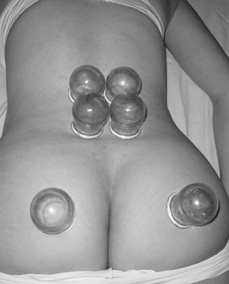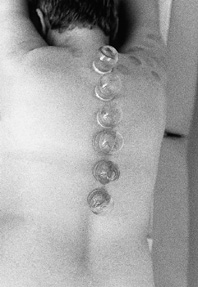Nervous System
Inflammation of the Nerves (Neuritis), Neuralgia (Ischialgia)
Neuritis refers to inflammations and damage of a nerve. Its cause can be found in infectious, toxic, and mechanical vascular disorders, or in metabolic disturbances. In neuritis, the patient suffers from burning, piercing, or stabbing pain that increases at night, during movement, and with temperature changes. Also typical for inflammations of the nerves are sensory disturbances like tingling, limbs falling asleep, and muscular weakness to the point of complete paralysis.
Neuralgia, on the other hand, refers to episodic, often excruciating pain along the course of a sensitive or mixed nerve, without any visible external changes. Neuralgic pain is wrenching or pulling, piercing or dull. Neuralgic pain differs from the pain associated with neuritis in that it occurs in lightning-fast attacks that are often preceded by a sensation of heat or formication. The pain lasts for seconds or minutes. Between attacks, the patient is either completely free of pain or experiences dull pain of low intensity.
Neuritis, in contrast, manifests in permanent pain. Transition from neuritis to neuralgia is smooth.
Possible causes of neuralgia are infections of all kinds, metabolic disorders, anemia, arthritis, and so on. Under the heading of neuralgia, we include trigeminal, intercostal, sciatic, and herpes-zoster pain, but also certain types of toothache and migraine. Many forms of unbearable neuralgic pain have a psychosomatic origin.
Sciatica (Ischialgia)
Ischialgia is the most common form of chronic neuralgia. It refers to the appearance of severe pain along the course of the sciatic nerve and its branches. Ischialgia can be caused by injuries or pressure on the nerve, damage to the intervertebral discs, poisoning, metabolic or infectious diseases, inflammations in the area of the lower lumbar spinal column, or radiating pain from coxitis, but also quite commonly, as in lumbago, by lifting heavy objects.
Symptoms
• Various types of pain (stabbing, wrenching, dull), originating in the lower section of the spinal column and often running through the entire leg into the foot.
• Occasionally, numbness and weakening of the calf muscles and sensitivity in the hip. Aggravation of pain by movement, coughing, sneezing, or pressure.
• Neuralgia is difficult to affect with medication. It does, however, respond well to regulation therapies.
As in any disease, we must first consider the cause of ischialgia.
Suggested Therapy
Neuralgic disorders, like rheumatic ones, fall into the range of indications for cupping therapy (Fig. 14.1).
• Apply cupping treatment twice per week, until the complaints have disappeared.
Supplemental Therapy
• Homeopathy. We generally prescribe the same homeopathic remedies for neuralgia and neuritis. In most cases, pain can be eliminated in a short time with organotropic and functiotropic remedies.
• Phytotherapy. Embrocation with external circulation-enhancing extracts increases the effect of cupping treatment.
• Vitamins. Vitamin B complex and vitamin E.
Alternating Therapy
• Chiropractic therapy. In slipped disk.
• Neural therapy. Quaddle therapy with local anesthetics over the corresponding segments and tender areas.
• Acupuncture. Causal treatment.

Fig. 14.1 Dry cupping on both sides of the lumbar vertebrae and above tender areas, often on the buttock cheeks and thighs. In alternating treatment, cupping massage brings faster results.
Vegetative Dystonia
Vegetative dystonia (disturbed regulation of the vegetative nervous system) refers to regulatory disturbances in individual organs or entire organ systems, without evidence of organ damage. A relatively large number of patients who visit naturopathic practitioners suffer from vegetative dystonia.
The effects of these disturbances are organ-related symptoms such as a feeling of retching and dryness in the throat, bladder irritation, constipation, and more rarely diarrhea. Further effects are cardiac arrhythmia and pressure and stabbing pain in the heart region, constricted feeling in the chest, and poor circulation. The pain arises generally in the head and muscles, especially in the shoulder-neck-arm area and lower back.
In addition, we see sleep disturbances, dizziness, fear, agitation, fatigue and exhaustion, depressive mood swings, nervousness, tendency to asthma and allergies, as well as sexual malfunctions.
Job- or family-related conflicts, overexertion, existential insecurity, and so on, are transferred into physical malfunctions. In spite of the fact that no organic changes can be noticed, patients feel very ill. The adrenaline balance of an organism that has suffered excessive tension in this way for a long time is bound to lead to neurovegetative derailment.
In conventional Western medicine, vegetative dystonia is mostly treated with psychotropic drugs, hypnotics, and sedatives. These remedies can provide the patient only with temporary relief. They are not truly helpful because they can additionally impede or even block vegetative regulation. Cupping therapy, on the other hand, offers true relief. At the same time, this therapy serves to confirm or disprove the previous diagnosis of vegetative dystonia.
It is important to start specific treatment of vegetative dystonia early and not at a point when the regulatory system can no longer be activated or is already destroyed. My experiences with cupping therapy in the treatment of vegetative dystonia are so positive and convincing that I can strongly recommend this healing method.
The explanation for the good treatment successes of cupping therapy in vegetative dystonia are related, among other factors, to the stimulation and mobilization of the organism’s own regulatory systems.
Suggested Therapy
• Treatment should begin with segmental therapy at the site of the symptoms. Repeated treatments can often suffice in segment-related disturbances to obtain a retuning of the state of vegetative reaction.
• Afterwards, treatment should be performed via the spinal column. According to acupuncture theory, one of the eight extraordinary channels, the so called governing vessel (GV), which runs through the back, is in charge of regulating energy.
• In vegetative dystonia, it is also important to treat the spinal column, since this is the location where the manifold interchanges between organs and glands take place.
• Because the effect of cupping on the spinal column is stronger than on other places, you should only treat a part of the spinal column in each session (Figs. 14.2–14.4).

Fig. 14.2 Dry cupping above the cervical and thoracic vertebrae.
The following treatment formula has proven effective—albeit with great flexibility:
• Initially, one treatment per week, with a total of 15 treatments.
• Further cupping treatments depending on effect.
Stay updated, free articles. Join our Telegram channel

Full access? Get Clinical Tree






